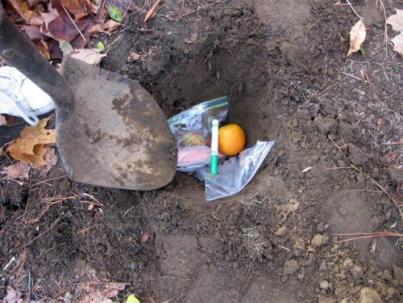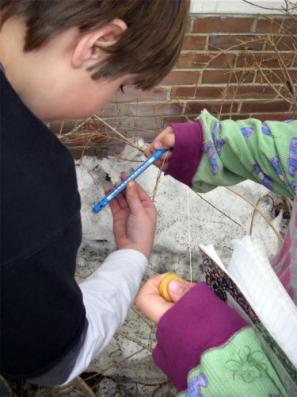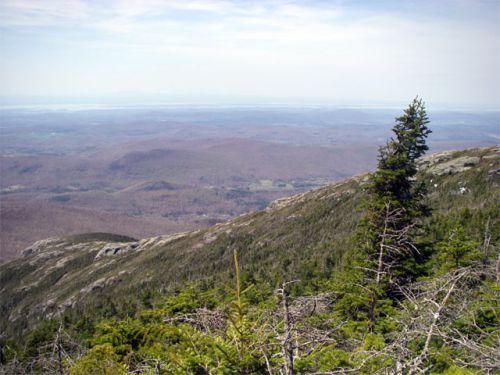June 30, 2008 Connecting to Archaeology and Polar Regions This Past School Year
Archaeology and polar regions are two topics that can be used to explain interesting science concepts and skills. This past year, two of the classes at Chester-Andover Elementary School, participated in a number of interesting activities to gain important knowledge and skills.
Let It Rot Lab
One of the first activities we did was the Let It Rot Lab. We started back in the fall, before the PolarTREC connection was started. Jennifer reports about the work we did.
*"Way back in September, we, Mr. Kelley’s class, chose various objects, such as crayons, fruits, and an issue of the educational magazine; "Storyworks”. Here we are now, almost a year later, and all wondering the same thing; What will the objects look like? Almost overrun by anticipation, we beg in a futile effort for Mr. Kelley to dig it up now. Will there be nothing left of the items? Will there be any clues as to what had been buried?
This exercise will teach us about archaeology and what can take place over time if you leave things to nature’s will. We will get a taste of what Mr. Kelley will be doing in Alaska this summer when we excavate in the fall. Hopefully I can contain my excitement until then!" *
 Markers, fruit, and plastic bags are all part of this Let It Rot hole. The materials will be excavated in the Fall of 2008 after one year underground. There will be more lab info and pictures this fall.
Markers, fruit, and plastic bags are all part of this Let It Rot hole. The materials will be excavated in the Fall of 2008 after one year underground. There will be more lab info and pictures this fall.
Polar Projects
Two polar projects we worked on were the Snow and Air Lab and the Snow Core Lab. We are fortunate here in Vermont to have a fair amount of snow each winter. Experimenting with the snow gets us outside and working with a material, snow, that people either love or hate. For 5th and 6th graders, snow is usually a good thing!!
The first activity we did was the Snow and Air Lab. We did this lab to determine if the temperature of the air changed more quickly than the temperature of the snow. We chose sunny spots and shady spots to do our work. Data charts were made, times for established, and data was collected over the next 5 hours. The data supported the hypothesis that most of the students had created, air temperature does change more quickly than snow temperature. Our discussion of these findings focused on animals living in the snow, the speed of the snow melt in the spring, and the science of snowmaking. As with any of our experiments, we ended up with even more questions to be tested later.
 Two students carefully check the temperature of the snow and air during our lab.
Two students carefully check the temperature of the snow and air during our lab.
The second polar lab we did was the Snow Coring Lab. The purpose of this activity was to investigate snow cores taken from different areas in Chester. Samples were taken from a field, a swamp, a snow bank, and a forest. When the core samples were taken there was about 15” of snow still on the ground. Our first task was to sketch the sample quickly and then begin examining it more closely.
The cores were made up mostly of small, ice chunks. We had a tough time examining each individual crystal though, they were hard to examine and melted fast. We did know the part of the core had the oldest snow and what section had the newest snow, but we couldn’t really tell the crystals apart. Determining where the sample came from was another challenge.
Discussion topics with this experiment were ideas such as: "This shows that snow is made of ice crystals and each ice crystal is different.” "When snow and ice are in the tube, it takes the shape of the tube.” "The snow cores show that the snow has different layers.”
Questions for future experiments: "How fast does the snow melt?” "What causes the snow to form the way it does?” "Does hard snow hurt when you fall on it?” "What is the longest icicle?” "Does soft snow have different crystals?” "Does snow melt at different rates in different places and with different amounts of light?”
The conclusion from one of the groups below summarizes the experiment: *"We all liked picking apart the snow and looking at it. We learned that there are different ices and snow pieces from different places. We would all change the amount of snow we had, more is needed.” * Our Last Great Adventure of the Year!!
The last great adventure for the year for our classes was to hike up Mt. Mansfield, the highest mountain in Vermont. Along the way, we passed through and examined different vegetation zones. Keegan describes the summit experience:
*THE TOP! *
"I am now the goat!” I yelled from the top of the highest mountain in Vermont. We had been making up trail names for each other and I wanted to be "The Goat”. My instructor said that I had to earn it, so for the time being I had to be G.I.T. (goat in training). Now, at the top of Mount Mansfield, I was "The Goat”. We walked through a lot of different habitats on our way up the mountain. We first walked through a hardwood forest, then a spruce/fir forest, a section of krummholz, and finally, the alpine habitats. The alpine habitat we walked through was one of the three known alpine habitats in Vermont. The others are located on the tops of Camels Hump Mountain and Mount Abraham. Climbing this mountain taught me about myself and a few life lessons like: • Not to get down when you’re hiking in the back; just keep going, • Don’t waste all of your energy in the beginning of the climb, and • Don’t talk to people who are climbing but not smiling- but that’s a whole different story. I will always remember this as a fond memory and will have a good story to tell later on. I’m glad I took on the challenge of hiking this 4,393 foot mountain.
 Sunset Ridge stretches westward towards Lake Champlain. There are a couple of different alpine habitats, krummholz and alpine tundra, to examine as you hike this mile long ridge. A beautiful place to visit!!
Sunset Ridge stretches westward towards Lake Champlain. There are a couple of different alpine habitats, krummholz and alpine tundra, to examine as you hike this mile long ridge. A beautiful place to visit!!
**With all the activities we did this year, we tried to be scientists, writers, historians, mathematicians, readers, and thinkers. My next task is to go off and learn how to be an archaeologist. What a great way to spend a summer vacation!! **

